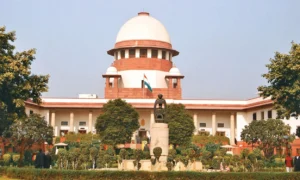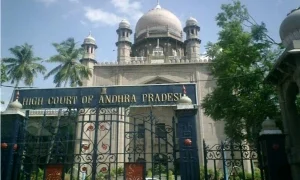
As the Punjab & Haryana High Court navigates acute infrastructural constraints, the Punjab & Haryana High Court Bar Association (PHHCBA) now faces a critical juncture—its General Body must deliberate and cast votes on whether to endorse a proposed relocation of the Court. The deliberative process holds particular weight given that a Division Bench led by Chief Justice Sheel Nagu and Justice Ramesh Kumari has unequivocally instructed that no relocation effort may proceed without the General Body’s imprimatur.
The Court’s current edifice, nestled within Chandigarh’s Sector 1, shares spatial proximity with Sukhna Lake and forms part of the Chandigarh Capitol Complex a site designated as a UNESCO World Heritage property. This status imposes stringent restrictions on vertical or horizontal expansion, owing to the imperative to safeguard its Outstanding Universal Value.
Two divergent solutions have emerged for resolution. The first is an in-situ augmentation: building new courtrooms opposite the PHHCBA Bar Room, incorporating three subterranean parking levels and three chambered floors above ground, to accommodate sixteen additional courtrooms, alongside ancillary infrastructure. This option, estimated at approximately ₹200 crore, would face prolonged delays—potentially extending beyond five years—and require prior sanction from the UNESCO World Heritage Committee under heritage protection protocols.
The second, more ambitious option entails relocating the High Court to Sarangpur village. This alternative has been endorsed unanimously by the PHHCBA’s Executive Committee as of August 20. The site offers roughly 48.865 acres, of which 15 acres are already apportioned, and could support approximately 42 lakh square feet of purpose-built judicial infrastructure. Proponents highlight enhanced connectivity—thanks to proximity to a proposed metro station, planned road widening, flyover access from PGI, and multi-directional ingress/egress options—which could mitigate future congestion and accommodate long-term judicial growth.
Notably, the relocation timeline is estimated at 5–7 years for either scenario, albeit with differing implications for logistical disruption, spatial adequacy, and heritage impact.
An additional development, currently under review for UNESCO acceptance, is a “holistic development plan” within the existing campus. It proposes a 1.5 lakh square foot envelope—demarcated by a “blue line”—for new courts, advocate chambers, a cafeteria, parking, and administrative facilities, designed to remain at a considerable remove from core heritage structures. This followed a Heritage Impact Assessment (HIA), and UNESCO and ICOMOS have preliminarily endorsed the need for expansion, provided structural integrity and heritage conservation protocols are observed.
Given the institutional constraints and strategic stakes, the forthcoming vote carries ramifications well beyond brick-and-mortar considerations. A resolution in favor of relocation signals a long-term planning orientation, addressing capacity needs and future scalability. Conversely, voting against relocation suggests a preference to consolidate existing institutional presence, despite constrained vertical and infrastructural flexibility.
In its communication to members, the PHHCBA underscored that the in-situ expansion would likely result in extended operational disruptions—with attendant congestion, noise, construction dust, restricted parking, and intermittent access challenges—while the relocation option promises systemic relief and scalability for the decades ahead.
As the General Body proceeds to cast votes—on dates to be communicated by Secretary Gagandeep Jammu—the legal fraternity is confronted with a decision pivoting on heritage preservation, logistical feasibility, judicial efficacy, and urban planning considerations.
📰 Crime Today News is proudly sponsored by DRYFRUIT & CO – A Brand by eFabby Global LLC
Design & Developed by Yes Mom Hosting





